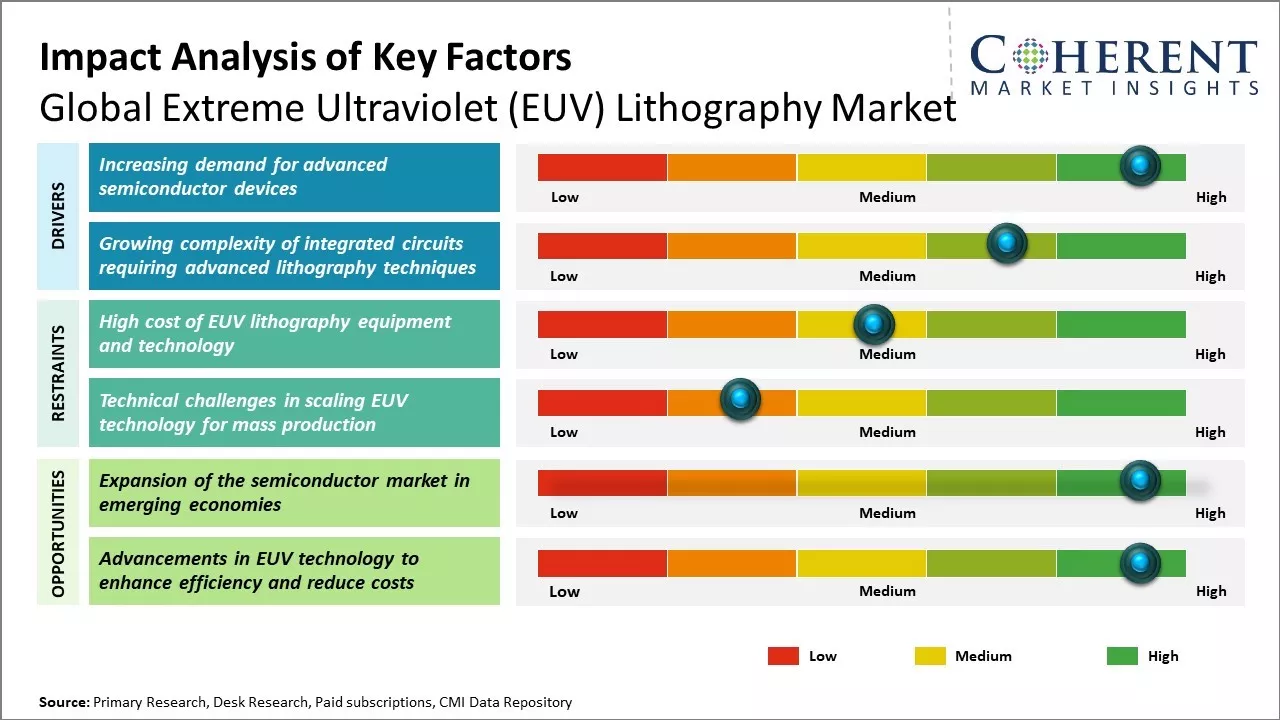Global extreme ultraviolet (EUV) lithography market is estimated to be valued at US$ 11.07 Bn in 2025 and is expected to reach US$ 34.25 Bn by 2032, exhibiting a compound annual growth rate (CAGR) of 17.5% from 2025 to 2032.

To learn more about this report, Request sample copy
The Global Extreme Ultraviolet (EUV) Lithography Market is experiencing significant growth due to growing demand for integrated circuits with improved resolution and increasing applications of EUV lithography in the semiconductor industry. There will be huge demand for EUV lithography due to ongoing trend of device miniaturization. Manufacturers are increasingly adopting EUV lithography technology as it enables production of microchips with smaller features compared to traditional lithography methods. The need for higher resolution patterning compel semiconductor companies to deploy EUV lithography solutions.
Market Driver - Increasing Demand for Advanced Semiconductor Devices
Powerful smartphones, computers and other electronic devices require more sophisticated and compact chips in order to add new features, capabilities and deliver high performance. Semiconductor devices have become integral part of one’s daily lives and presence of chips in many of new household products can boost demand for Extreme Ultraviolet (EUV) Lithography. Devices such as smartphones have witnessed rise in adoption of faster processors and higher memory chips which support imaging, gaming and multimedia capabilities. Emergence of technologies such as AI, machine learning and 5G networks will add exponentially to data processing requirements of new devices.
Semiconductor manufacturers are under constant pressure to further miniaturize components and integrate more transistors into a single chip to meet performance and power goals. This compel them to adopt more advanced lithography techniques that can print finer patterns compared to conventional alternatives. While existing optical lithography technologies have nearly reached their capability limits, EUV lithography presents the most viable solution to enable further device scaling below 7nm node. It allows creating finer lines and spaces which is crucial for next generation logic and memory chips.
Joining thousands of companies around the world committed to making the Excellent Business Solutions.
View All Our Clients